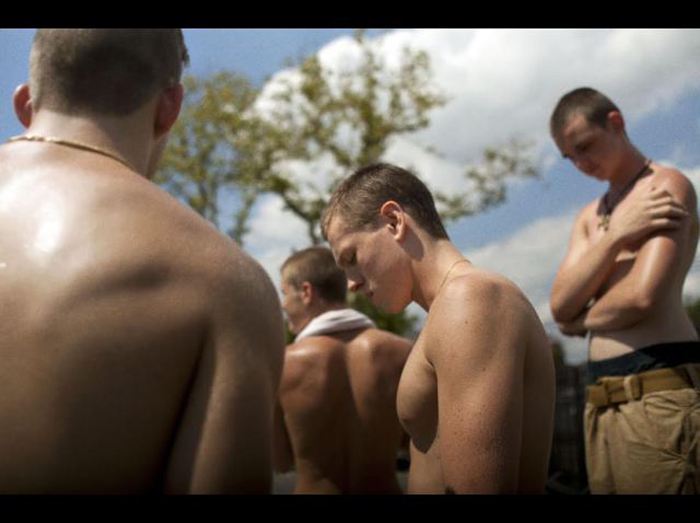With a hypnotizing mix of neon lights and electronic music, Eliza Hittman’s Beach Rats presents viewers with the gritty, day-to-day life of her hometown Brooklyn. Cinematographer Hélène Louvart’s muted cinematography and Hittman’s artistic direction–which earned her the Best Director prize at Sundance 2017–make Beach Rats a stunning visual experience, but fail to deliver an engaging storyline, or any particularly likable characters, either.
The film focuses on Frankie (Harris Dickinson), a closeted teenager who spends his summer struggling with his grief-stricken family and an exhausting double life. To his family, he’s a straight, miscreant dude-bro who spends most of his time on drugs with his equally delinquent friends. Yet, in secret, he’s an insecure boy who seeks out older men online in hopes of better understanding his sexuality. Although this premise has the potential for a moving depiction of a boy navigating the taboo of homosexuality in a bleak neighbourhood, instead, the plot twists and turns without anything significant ever really happening.
Despite the story's lack of direction, newcomer Dickinson’s standout performance is remarkably genuine, and demonstrates the character’s quiet inner conflict with his identity. As Frankie reluctantly pursues local girl Simone (Madeline Weinstein) to maintain his heterosexual facade, Dickinson skillfully portrays Frankie’s frustration in his inability to be “normal.” However, Frankie never really grows or changes, and by the last scene of the movie, viewers are left unsatisfied by his lack of character development. The principal issue does not lie with Dickinson’s acting at all, but rather with Hittman’s writing of Frankie as a static, passive character.
The sombre, raw quality of the film’s cinematography aptly portrays the stifling tedium of Frankie’s daily life. The close-up shots of Frankie’s face express the character’s inner turmoil and add to Dickinson’s on-screen presence, while the mixture of atmospheric, panning views of the beach and the Coney Island Boardwalk’s neon lights draw viewers into the film’s scenic backdrop. Hittman alternates between Nicholas Leone’s occasionally headache-inducing electronic music and complete silence in Frankie’s moments of vulnerability and intensity, which also tended to be the most potent scenes.
Unfortunately, the colourless character writing, combined with a repetitive and ultimately disappointing plot, leaves Beach Rats’ message unsatisfyingly vague. However, the subject of the film is as relevant as ever; heteronormativity, the difficulty of coming out, and the double standard of lesbians being ‘hot’ while gay men are “just gay, ”as Simone puts it–just some of the issues which LGBTQ+ teens deal with every day. Beach Rats is a coming-of-age film in which the protagonist never actually comes of age, so to speak, and in a grim sense, maybe this makes the film more realistic. While Hittman attempts to hit all these marks, because of Frankie’s lack of character arc and the absence of any other characters that viewers could feel remotely sympathetic towards, her meandering approach registers as shallow and incomplete. Hittman’s second feature film is the epitome of an aesthetically pleasing indie flick, but falls short with an unfulfilling script and a winding, anticlimactic storyline.









